Poultry farming is an essential part of the Philippine economy. The Philippines is the world’s top poultry-producing country. However, there are also advantages to raising chickens in the Philippines, including access to ample land and water resources, low initial investment costs, and low labor costs.
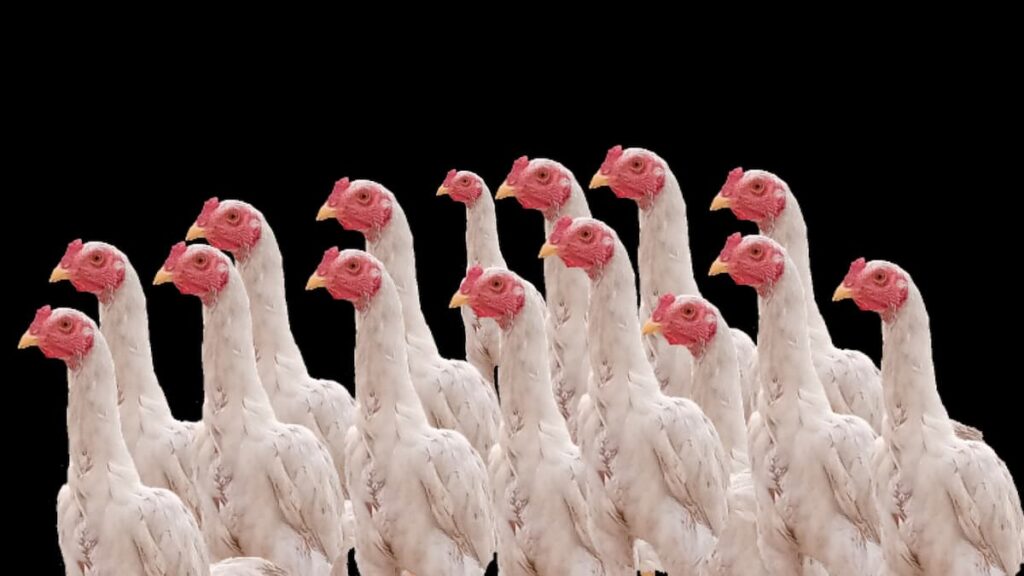
Poultry farming in the Philippines
Requirements for poultry farming in the Philippines
Poultry farming in the Philippines is a lucrative business, with a market demand for poultry meat and eggs. Several requirements must be met to conduct poultry farming successfully in the Philippines.
- The first requirement is access to ample land: A minimum of 250 acres (100 hectares) would be necessary for commercial poultry production, although larger areas are also suitable. Poultry farmers in the Philippines should also have access to good water supplies and enough sunlight.
- The second requirement is a reliable feed supply: Chickens need a high-quality diet that includes nutrients and proteins. In the Philippines, feeds such as corn, soybean meal, and wheat are commonly used for poultry farming.
- The third requirement is proper ventilation: Chickens are susceptible to respiratory infections when confined in close quarters, so it is important to provide adequate air circulation. Ventilation systems can include fans, air conditioning units, or open windows.
Steps to start a poultry business in the Philippines
Below are some steps to follow for starting a poultry business in the Philippines:
- Do your research, including studying the market conditions, government regulations, and costs associated with starting a poultry farm.
- Identify an area where you believe there is potential for growth in the poultry industry. You may want to consider regions with high population densities or areas with dense agricultural land suitable for poultry production.
- Obtain all necessary permits from local authorities. This will include obtaining a Poultry Business Registration Certificate (PBRC) and Permit to Operate (PTO). In addition, some municipalities may require additional licenses or permits, such as an environmental impact assessment or feedlot permit.
- Ensure your property is properly zoned and prepared for livestock production, including providing adequate shelter, water supplies, and waste disposal facilities. Also, ensure enough room to build housing for your employees and adequate processing facilities.
In case you missed it: How to Improve Agriculture in the Philippines, Ways, Ideas, and Tips
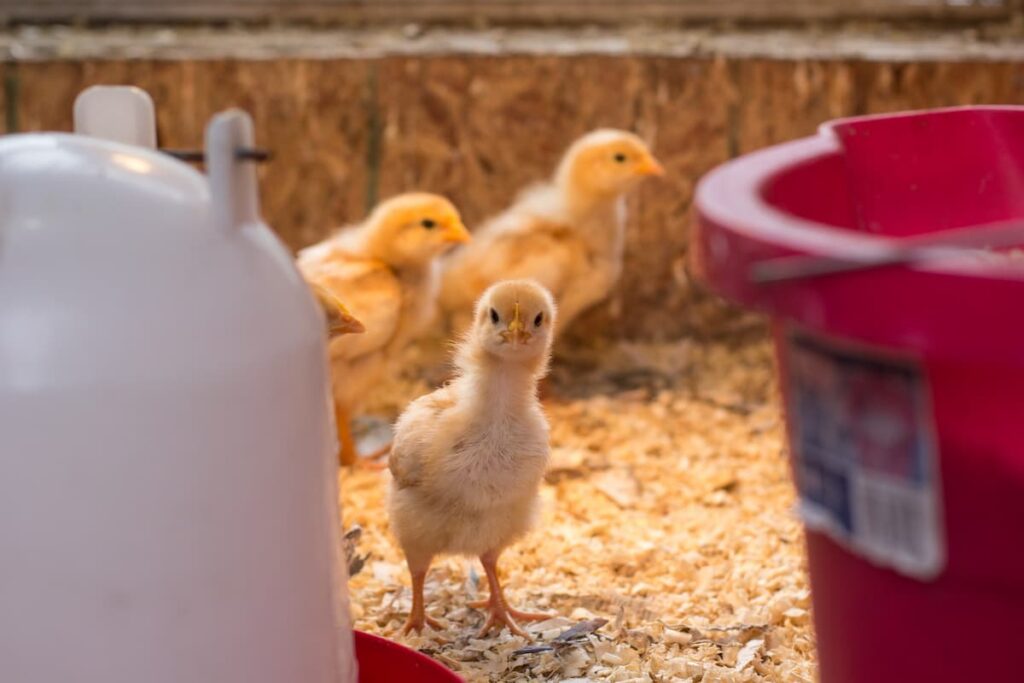
Types of poultry farming in the Philippines
The commercial production of broiler chickens and eggs dominates poultry farming in the Philippines. However, a limited number of small-scale poultry farms produce other types of poultry, such as turkeys, ducks, and geese. The main types of poultry farming in the Philippines are:
- Commercial broiler chicken production is the largest type of poultry farming in the Philippines. This type of poultry farming is dominated by small-scale producers who raise male and female chicks for meat production. These producers usually have between 2 and 10 thousand birds per farm.
- Commercial egg production is also a major activity in Philippine poultry farming. This type of farming is mainly conducted by large-scale producers with more than 100 thousand hens per farm.
There are three main types of poultry farming in the Philippines: intensive commercial layer production, backyard chicken raising, and cage-free growing. In each type of farming, chickens are raised in large cages or barns with access to food and water, but they’re not given space to move around.
Poultry breeds available in the Philippines
Smallholder chicken farmers produce an average of 1.5 million birds per hectare, while large-scale producers have an average flock size of more than 500,000 birds per hectare. The main types of birds raised are layer hens (for eggs), broilers (for meat), and turkeys (for their feathers).
Select the right breed of chicken for your operation. There are many varieties of chickens available in the Philippines, but the most common are Muscovy, White Leghorn, Rhode Island Red, Golden Comet, red junglefowl, Araucanas, Plymouth Rock, Light Sussex, and Australorp chickens. Commercial growers prefer heavier breeds because they lay more eggs and require less care than lighter breeds.
Poultry farming areas in the Philippines
Poultry farming in the Philippines is largely concentrated in Luzon, Visayas, and Mindanao. According to the National Chicken Council (NCC), Luzon dominates chicken production with over two-thirds (67%) of total national output. In second place is the Visayas with 17% output, followed by Mindanao with 10%.
In case you missed it: Dairy Farming in Philippines: Breeds, How to Start
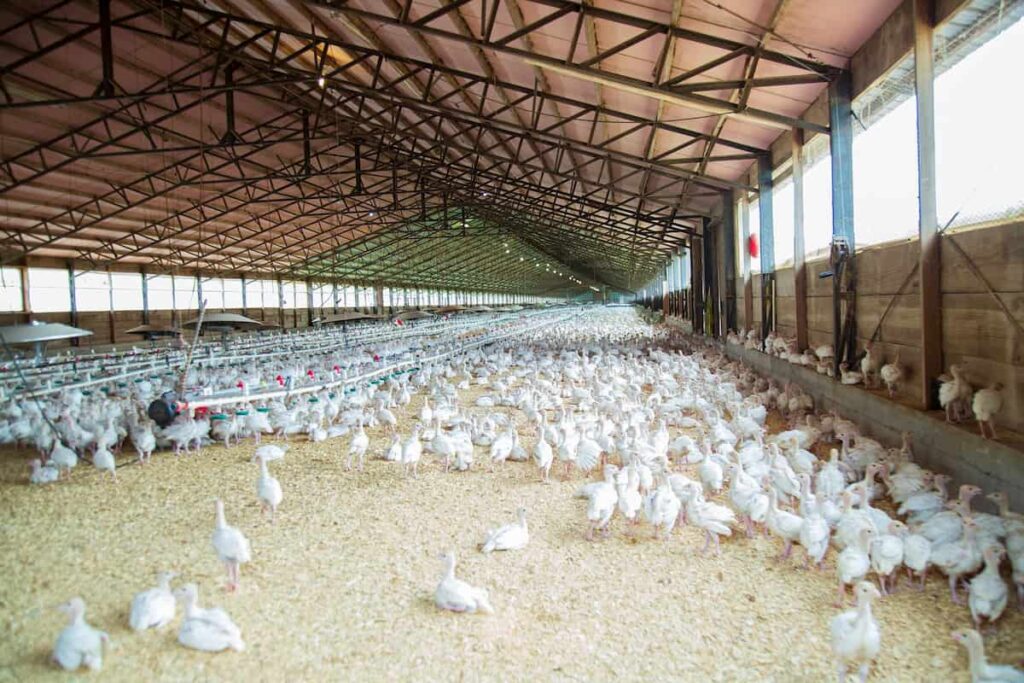
Feeding requirements of poultry in the Philippines
Poultry farming in the Philippines is a growing industry as the country seeks to become self-sufficient in poultry food. The main factors that promote poultry farming are the high demand for eggs and meat and land availability and feed availability.
To produce egg-laying hens, farmers need to provide them with a range of feed. Common feeds used for poultry include corn, wheat, soybean meal, rice bran, and cottonseed meal. For broilers, farmers use a mix of grains, including corn, wheat, soybean meal, rice bran, and cottonseed meal.
To ensure chickens get the right amount of feed at all times, farmers use an automatic feeder or pellet dispenser. These systems will dispense a set amount of feed every time a chicken eats or drinks from its water bowl.
Poultry egg farming business plan in the Philippines
- There are several things you need to consider if you want to start a poultry egg farm in the Philippines. The first is land availability – you need at least an acre per thousand birds. You will want to get approval from the government to operate your farm, as well as obtain appropriate permits and licenses.
- Once you have all the necessary approvals, you must set up your farm infrastructure. This includes housing for your birds, feed mills, waste management facilities, and more. You will then need to invest in adequate equipment, including incubators and hatcheries.
- Another factor to consider when starting a poultry egg farm in the Philippines is market demand – know what type of eggs people are currently buying and supply them accordingly.
Backyard chicken farming in the Philippines
- Backyard chicken farming in the Philippines has become a popular option for those who want to raise chickens without having to deal with the large amount of space necessary on traditional poultry farms. Chickens can be kept in small enclosures that are easy to maintain and provide plenty of fresh eggs and meat for those who enjoy eating bird meat.
- Backyard chicken farming in the Philippines has several advantages over traditional poultry farming. Firstly, it is much less expensive to set up and operate than traditional poultry farms. Second, chickens can be kept in much smaller spaces which makes them easier to manage and provides more opportunities for people who want to raise chickens as pets or for their contribution to the food chain. Finally, backyard chicken farming allows people to interact directly with their chickens, creating a close bond that can result in better chicken care.
Cost-affecting factors for poultry farms in the Philippines
Many costs are associated with starting a poultry farm business in the Philippines. The most important cost is the initial investment. Poultry farming requires significant financial resources so start-up costs can be high. Other costs include feed and water, housing, equipment, and veterinary care.
In case you missed it: Mango Farming in Philippines: How to Start, Varieties, Planting, Care, and harvesting
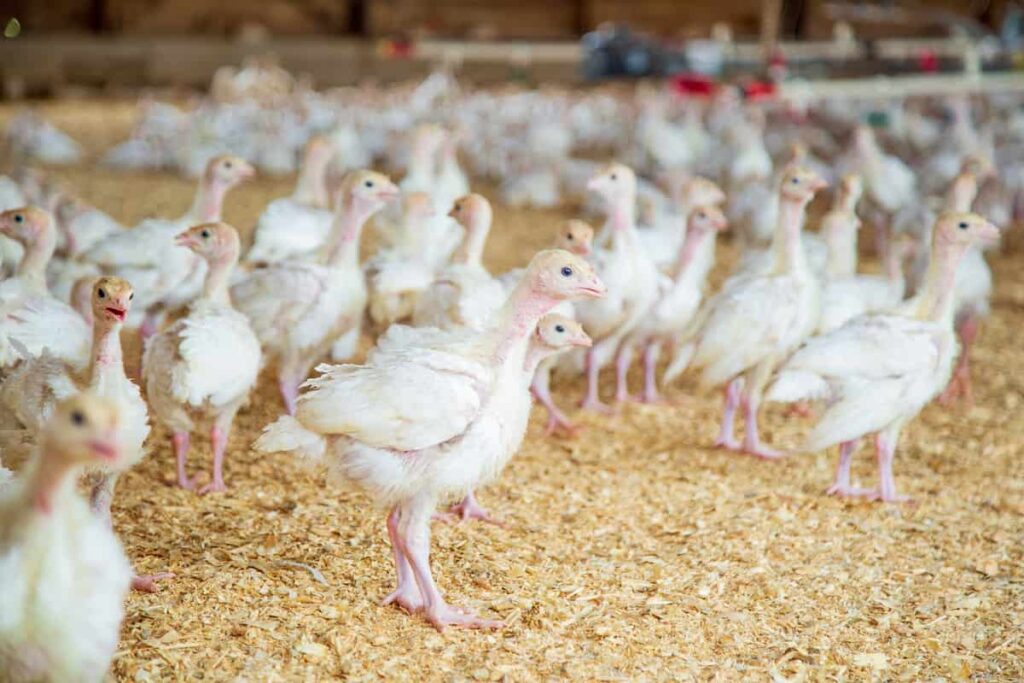
The regulations for poultry farming in the Philippines
The Philippines has a long history of poultry farming, and it is still one of the most important agricultural sectors in the country. The regulations for poultry farming in the Philippines are complex and vary depending on the region. However, there are some general rules that all poultry farmers must follow.
Some of the most important regulations for poultry farming in the Philippines include the following:
- All chickens, ducks, geese, quails, pheasants, and other poultry must have clean water and a food supply free from harmful chemicals or pollutants.
- All livestock must be properly vaccinated against diseases such as avian Influenza A(H7N9), African swine fever (ASF), Newcastle disease virus (NDV), and human nasopharyngeal carcinoma viruses (HPV).
- Poultry farms must have a Proper Veterinary Services Plan to deal with emergencies. This includes having a veterinary doctor on staff who can treat sick animals and deal with any preventable outbreaks of diseases.
Poultry farming loans and subsidies in the Philippines
The Philippine Poultry Authority (PPA) regulates poultry farming in the country. The PPA sets minimum standards for chicken breeds, housing conditions, feed specifications, veterinary care, and labor conditions for poultry farmers. Additionally, the PPA establishes maximum weight limits for different types of animals and their by-products.
The main sources of financing for poultry farming in the Philippines are loans from commercial banks and development finance institutions (DFIs). Loans from commercial banks are usually available in soft loans or lines of credit, while DFI loans are typically in the form of concessional loans or investment facilities. In addition, the government also provides subsidies on inputs such as feed and water, which helps to make poultry farming a more economically viable option.
Diseases and pests affecting poultry farming in the Philippines
- It can be categorized into avian influenza (AI), Newcastle disease, leptospirosis, psittacosis, epizootics of Newcastle disease virus, coccidiosis, calcinosis, nematodes, and phlebotomy. Many chicken houses in the Philippines keep large chicken flocks for meat or eggs. As a result, chickens are kept in crowded conditions with limited space to move around. There is also a high concentration of human feces and other pollutants in the air, which can contribute to the spread of diseases.
- Newcastle disease is a highly contagious viral infection that affects poultry worldwide. The main pathogen responsible for Newcastle disease is the Newcastle Disease Virus (NDV). This virus causes severe respiratory illness in poultry, including chickens, turkeys, ducks, and geese. Newcastle disease can be fatal if not treated quickly with antibiotics. Vaccines are available to protect birds against Newcastle disease, but they are not 100% effective, so it is important to take appropriate precautions such as cleaning feeders and water.
- Poultry farming is a major contributor to the country’s economy, with poultry products accounting for about one-third of total agricultural exports. The Philippines ranks fourth in poultry production worldwide, with about 25 million birds comprising the national flock. However, several diseases and pests can affect poultry in the Philippines.
- One common disease is avian influenza (AI), which can be fatal to chickens and other poultry if not treated quickly. AI outbreaks can be caused by different virus strains and spread through infected bird droppings or fluids or contact with feathers, blood, or other body fluids. Prevention involves preventing exposure to live viruses by practicing good hygiene, using effective respiratory protection when handling infected birds, and euthanizing sick or dead animals immediately.
- Another common disease is Newcastle disease (ND), which affects chickens, geese, and ducks. ND is caused by a hemolytic Streptococcus bovis strain that causes severe dehydration and kidney failure in birds. It is most commonly spread through contact with diseased animal faeces or water contaminated with these droppings. Infected birds usually show signs of fever, weakness, and weight loss within three days after exposure to the pathogen. Treatment focuses on treating dehydration and managing infection outbreaks with antibiotics.
In case you missed it: Sheep Farming in Philippines: How to Start, Breeds, Production, and Management
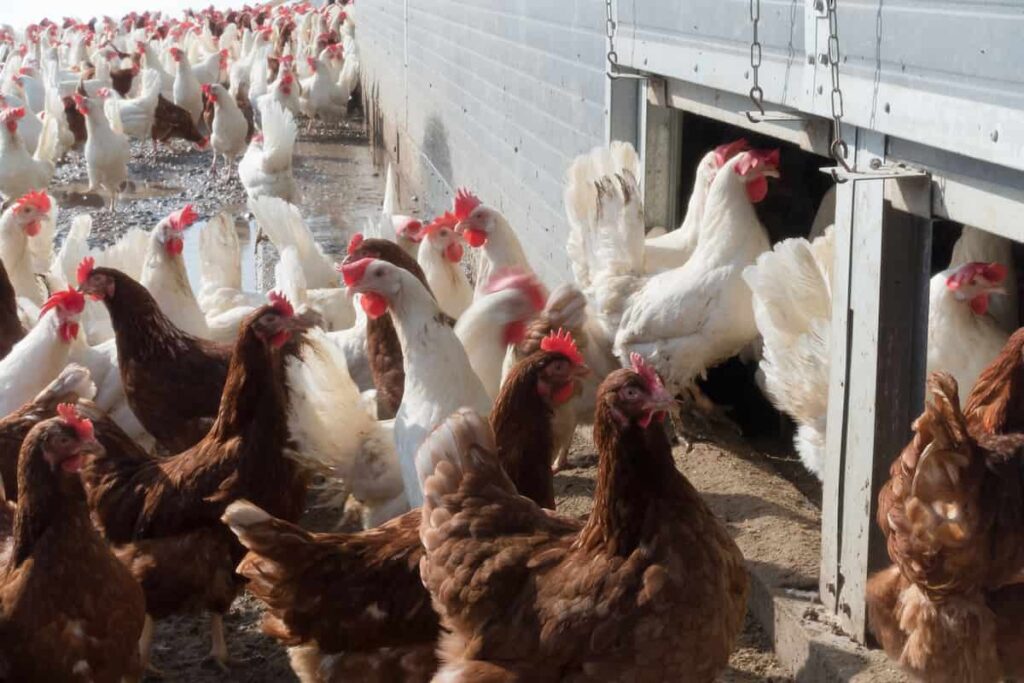
Is poultry farming profitable in the Philippines?
Poultry farming is a profitable business in the Philippines. However, given the right conditions and management, this type of agriculture can be very successful. The main factor that determines profitability is production cost. Chickens are relatively cheap to maintain, so operating costs, including feed, water, and electricity, are low compared to other livestock breeds. As a result, even small farmers can get into poultry production without investing a lot of money upfront.
Poultry farming is profitable in the Philippines, provided you have the right conditions and management. If you’re interested in getting started with this type of agriculture, consult an expert first to get guidance on how best to go about it.
Good husbandry practices for Philippines poultry farmers
To produce quality poultry products, good husbandry practices need to be followed. Here are some key tips for Philippine poultry farmers:
Use appropriate feeds and supplements
Good quality feeds, and supplements are essential for healthy poultry production. Choose feed appropriate for the breed of the raised bird, and make sure to supplement with minerals, vitamins, and other nutrients necessary for optimum health.
Keep poultry clean and dry
Chickens require clean surroundings to avoid respiratory infections and other problems. Ensure all litter boxes are cleaned regularly and any areas where birds roost or eat. Waterfowl should be kept wet but not submerged at all times, so they don’t get fungus infections on their heads from standing in water too long. Prevention is always better than treatment.
Control animal numbers wisely
Too many animals in a poultry barn can lead to disease and poor meat production. It is recommended that farms keep the population of chickens below 10,000 per hectare (2 acres). Larger flocks can often be managed by rotating different farm areas each week so the birds can interact with various enrichment materials such as fresh grass, straw piles, or wood chips. Providing fresh food and water sources will also help regulate animal numbers.
Tips on raising poultry in the Philippines
Raising poultry in the Philippines is a great way to provide fresh, healthy food for your family. Here are some tips on how to raise poultry in the Philippines:
- Start by acquiring a good flock of chickens or turkeys.
- Feed them a well-balanced diet of greens, insects, and pellets. Chickens need about 20 pounds of feed per year divided into four meals, plus water.
- Keep their coop clean and dry, and provide shelter from the sun and rain. There is enough room for the birds to move around and perch.
- Be vaccinated against diseases such as Newcastle disease (a highly contagious virus that can kill chicks) and avian influenza (a highly contagious respiratory virus).
In case you missed it: Greenhouse Farming in the Philippines: How to Start, Agriculture Crops, and Cost to Build
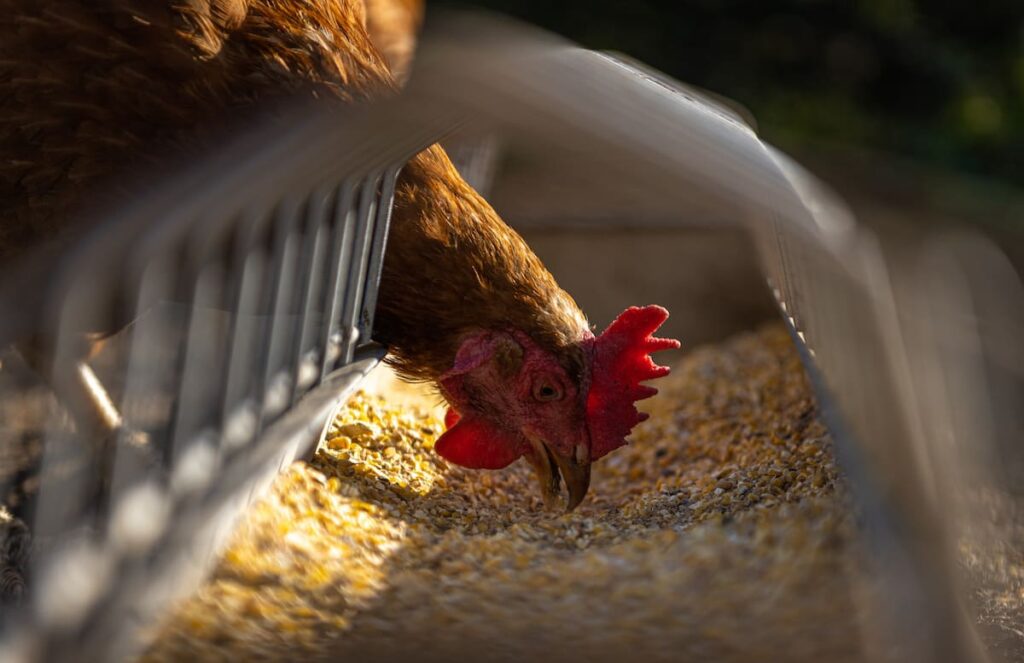
Poultry farming challenges in the Philippines
- Poultry farming in the Philippines faces several challenges, including infestations by avian malaria and Newcastle disease, high feed costs due to a lack of stable markets for poultry products, and competition from crops such as rice that provide more immediate returns for investors.
- For example, chicken production requires large amounts of land, which may not be available in all areas of the country. Additionally, some farmers lack an understanding of modern poultry farming techniques and may struggle to care for their birds properly. However, with good planning and effort on behalf of both farmers and investors, poultry farming in the Philippines can be very successful.
- The disease is a common problem in poultry farming, with Newcastle disease and avian influenza being the most common. Poultry farmers need to be on the lookout for these diseases and take appropriate measures to prevent them from spreading, such as disinfecting equipment. Poor nutrition is another common problem in poultry farming. Chickens, for example, are often fed low-quality feed, which can result in poor growth and health problems.
- The Philippines has a long coastline and extensive inland areas, making it an ideal place to raise poultry. However, there are some challenges that poultry farmers in the Philippines face. For example, there is a lack of water resources, which can limit how much chicken farmers can produce per unit of land.
Conclusion
The Philippines has a well-developed system of poultry production, with producers specializing in different types of birds. Several major processing plants export chicken products to countries around the world. The country is currently developing new technologies that will make it even more competitive in the global market.
- Types of Pesticides Used in Agriculture: A Beginner’s Guide
- Economical Aquaculture: A Guide to Low-Budget Fish Farming
- 15 Common Planting Errors That Can Doom Your Fruit Trees
- How to Make Houseplants Bushy: Effective Tips and Ideas
- Innovative Strategies for Boosting Coconut Pollination and Yield
- Pollination Strategies for Maximum Pumpkin Yield
- The Complete Guide to Chicken Fattening: Strategies for Maximum Growth
- Natural Solutions for Tulip Problems: 100% Effective Remedies for Leaf and Bulb-Related Issues
- Revolutionizing Citrus Preservation: Towards a Healthier, Greener Future
- Natural Solutions for Peony Leaf and Flower Problems: 100% Effective Remedies
- Maximizing Profits with Avocado Contract Farming in India: A Comprehensive Guide
- Natural Solutions for Hydrangea Problems: 100% Effective Remedies for Leaf and Flowers
- The Ultimate Guide to Choosing the Perfect Foliage Friend: Bringing Life Indoors
- From Sunlight to Sustainability: 15 Ways to Use Solar Technology in Agriculture
- The Ultimate Guide to Dong Tao Chicken: Exploring from History to Raising
- The Eco-Friendly Makeover: How to Convert Your Unused Swimming Pool into a Fish Pond
- Mastering the Art of Delaware Chicken Farming: Essentials for Healthy Backyard Flocks
- 20 Best Homemade Fertilizers for Money Plant: DIY Recipes and Application Methods
- How to Craft a Comprehensive Free-Range Chicken Farming Business Plan
- Brighten Your Flock: Raising Easter Egger Chickens for Beauty and Bounty
- How to Optimize Your Poultry Egg Farm Business Plan with These Strategies
- Subsidy for Spirulina Cultivation: How Indian Government Schemes Encouraging Spirulina Farmers
- Ultimate Guide to Raising Dominique Chickens: Breeding, Feeding, Egg-Production, and Care
- Mastering the Art of Raising Jersey Giant Chickens: Care, Feeding, and More
- Ultimate Guide to Raising Legbar Chickens: Breeding, Farming Practices, Diet, Egg-Production
- How to Raise Welsummer Chickens: A Comprehensive Guide for Beginners
- How to Protect Indoor Plants in Winter: A Comprehensive Guide
- Ultimate Guide to Grow Bag Gardening: Tips, Tricks, and Planting Ideas for Urban Gardeners
- Guide to Lotus Cultivation: How to Propagate, Plant, Grow, Care, Cost, and Profit
- Agriculture Drone Subsidy Scheme: Government Kisan Subsidy, License, and How to Apply Online
- Ultimate Guide to Raising Araucana Chickens: Breed Profile, Farming Economics, Diet, and Care
- Bringing Hydroponics to Classroom: Importance, Benefits of Learning for School Students
- Ultimate Guide to Raising Polish Chickens: Breed Profile, Farming Economics, Diet, and Care
- Ultimate Guide to Raising Australorp Chickens: Profile, Farming Economics, Egg Production, Diet, and Care
- Silkie Chicken Farming: Raising Practices, Varieties, Egg Production, Diet, and Care
- Sussex Chicken Farming: Raising Practices, Varieties, Egg Production, Diet and Care
Interested for poultry farming siargao island
how can I market my poultry farming
How much is start up cost of poultry business in Philippines?
What is the best breed for chicken laying egg?
Do you offer training for beginners?